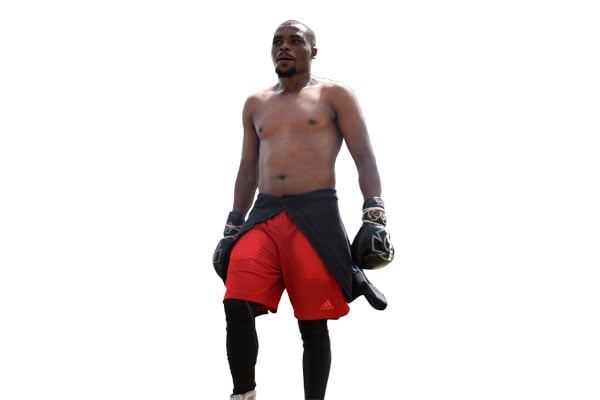What holds after Bogere’s weight switch?

Tough decisions. Bogere.
What you need to know:
- Bogere, (35-20-2) has fought in the 135 pound division for over a decade but his recent gain in weight has allowed his camp think of a shift in weight category
Sharif ‘The Lion’ Bogere, Uganda’s most prominent professional boxer in recent times, will be switching from lightweight (61kg) division to middleweight (72kg) before dropping to welterweight (69kg).
Bogere, (35-20-2) has fought in the 135 pound division for over a decade but his recent gain in weight has allowed his camp think of a shift in weight category.
“His body is well developed now for the welterweight division, which we think will be his new division after that one fight in the middleweight. He does look great in training and we think he is going to be great for welterweight,” Bogere’s manager Jimmy Alex said.
Boxing is a sport that majorly trades in weights. Some boxers are required to cut weight well as others gain. The question would be, which is harder, moving up or coming down in a weight class?
Usually, the rationale for a fighter coming down in weight is that they will be facing smaller, and hopefully less powerful opponents.
A fighter coming down in weight will have to restrict calories during training and then (temporarily) dehydrate themselves to make the official weight class for their bout – that will weaken the fighter and sap their strength.
Now, many fighters can ‘move down’ in weight and compete successfully for a while but as they get older and naturally grow heavier, it becomes much harder to ‘shrink down’ to make the weight class. And the dehydration messes up their electrolytes, which affects a fighter’s reaction time, ability to focus and even stamina and endurance. They start to ‘look old’ as the saying goes.
It should also be noted that the drastic dehydration can affect the fluid levels that surround the brain, and cause blood thickening that can increase the chances of clotting in the brain.
A fighter moving up in weight faces larger and likely stronger opponents. But they won’t have to weaken themselves and can compete at full strength.
Fighters who’s fighting styles are power, explosive and aggression-based, should not cut weight or a little as possible. They need full power, and speed.
When a fighter weighs in, they will often gain 4kg to 6kg post-weight-in by rehydrating and eating. They lose weight to fight smaller opponents.2
A bigger guy going down will have an advantage if the weight cut is reasonable and if they manage it effectively.
If a fighter managed their weight loss well, he would have an advantage by going (further) down in weight. But this is very hard to accomplish for long.
[email protected]




